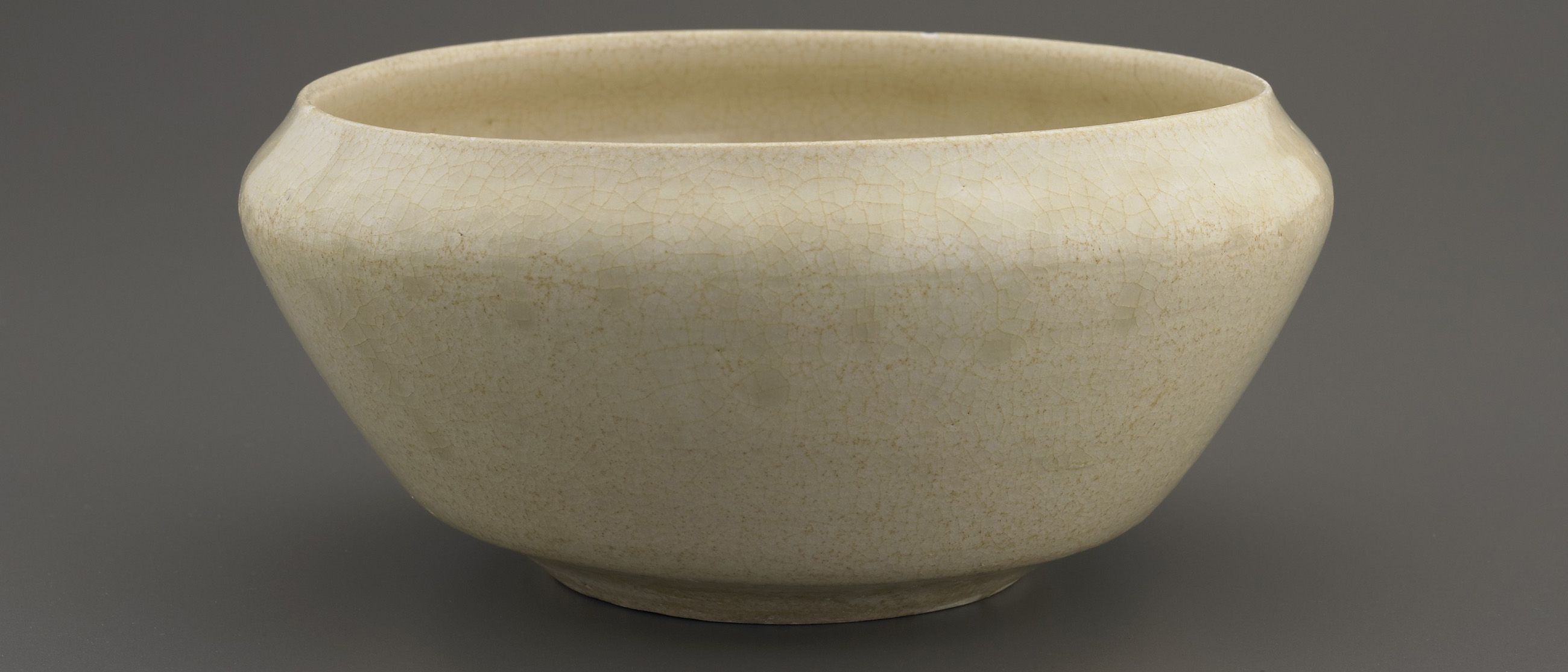CLEAR GLAZE
View all related objects in the collections
A clear glaze may be imagined as a cleaned-up "green glaze"—made either with as much green-tinting iron as possible removed from a glaze mixed from wood ash and clay or with a substitution of a ground stone for some of the wood ash. The initial inspiration for developing a clear glaze in Mainland Southeast Asia was the importation of Chinese porcelain with pale-blue qingbai glaze or ivory-white Dehua glaze. The desire to decorate under the glaze (using iron or, eventually, cobalt pigment) provided further incentive.
An ivory-toned glaze was used at North Vietnamese kilns from the eleventh century on, and in the thirteenth century it began to be accompanied by iron decoration under the glaze. With the advent of cobalt decoration, potters made efforts to intensify the white appearance of the body, in part by using a more colorless glaze, although they sometimes applied white slip beneath the glaze. Similarly, a clear, fairly colorless glaze appears on sixteenth-century wares at the Sawankhalok kilns that used underglaze iron decoration as an approximation of underglaze cobalt.Based on the excavation of quantities of seashells from the Ngoi kilns in the Red River Delta, shells figured in the formulation of the clear glaze there (Bui and Nguyen-Long 2001, 230, fig. 181). At kilns that operated in Phu Yen province, Central Vietnam, until the mid-twentieth century, shells sprinkled into the kiln around the stacked jars vaporized during firing to produce a clear glaze. Fragmented and fired seashells were also reported as a glaze ingredient, along with rice husks and clay, at a jar-making workshop operated in Borneo by potters descended from immigrants from Fuzhou (Harrisson 1986, 9).

